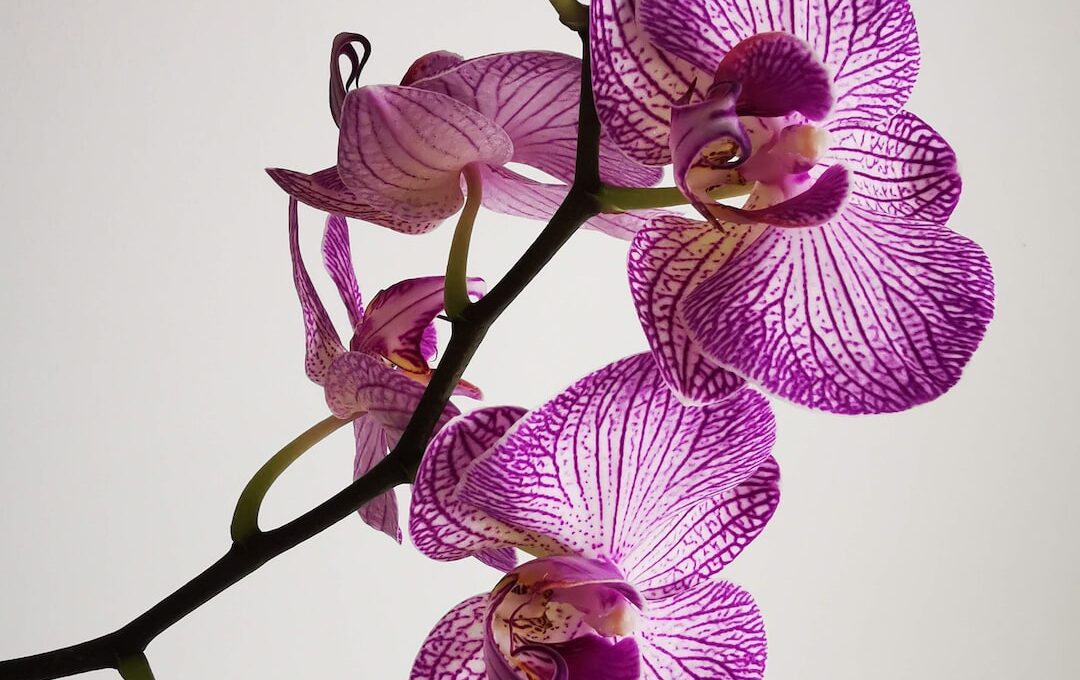Are you considering adding outdoor orchids to your garden, but unsure how long they will last?
Look no further! In this article, we will provide you with essential information on the lifespan of outdoor orchids and how to ensure their longevity.
When it comes to outdoor orchids, the ideal conditions for their growth are crucial. Factors such as temperature, humidity, and sunlight play a significant role in determining their lifespan. By understanding these conditions and providing proper care and maintenance, you can help your outdoor orchids thrive.
Choosing the right orchid varieties for outdoor cultivation is also essential. Some varieties are more resilient and better suited for outdoor environments. We will guide you through the selection process and help you find the perfect orchids for your garden.
Additionally, we will discuss the signs of orchid stress and how to address them promptly. By recognizing and addressing stressors, you can extend the lifespan of your outdoor orchids.
Avoiding common mistakes is another key factor in ensuring the longevity of your outdoor orchids. We will highlight these mistakes and provide you with tips to prevent them.
So, if you want to ensure the safety and longevity of your outdoor orchids, keep reading!
Quick Summary
- Outdoor orchids require specific conditions such as temperature, humidity, and sunlight for growth and longevity.
- Choosing the right orchid varieties for outdoor cultivation is crucial.
- Promptly recognize and address signs of orchid stress.
- Avoid common mistakes like overwatering, insufficient light, and incorrect fertilization for the longevity of outdoor orchids.
Understanding the Ideal Conditions for Outdoor Orchid Growth
If you want your outdoor orchids to thrive, you’ll need to understand the ideal conditions for their growth. Creating the perfect environment for your orchids is essential for their optimal growth and longevity.
Orchids are delicate plants that require specific conditions to survive outdoors. The ideal conditions for outdoor orchids include providing them with the right amount of sunlight. Most orchids prefer bright but indirect light, so placing them in a spot where they receive filtered sunlight is ideal. This will protect them from scorching and ensure they receive enough light for photosynthesis.
Another important factor is the temperature. Orchids thrive in temperatures between 60 and 80 degrees Fahrenheit during the day, with a slight drop at night. Avoid exposing them to extreme temperature fluctuations, as it can damage their delicate blooms and leaves.
Humidity is also crucial for outdoor orchids. These plants thrive in high humidity environments, so it’s essential to provide them with enough moisture. Misting them with water regularly or placing them near a water source can help maintain the desired humidity level.
Lastly, proper air circulation is essential for healthy orchid growth. Good airflow prevents the buildup of stagnant air, which can lead to fungal diseases. Placing your orchids in an area with gentle air movement, such as near a fan or open window, will promote their overall health.
By understanding and providing these ideal conditions, you can ensure your outdoor orchids have the best chance of thriving and living a long, healthy life.
Factors That Affect the Lifespan of Outdoor Orchids
To maximize the lifespan of your outdoor orchids, it’s crucial to consider various factors that can significantly impact their longevity. Understanding the factors affecting outdoor orchid health and implementing strategies for increasing their lifespan is essential for any orchid enthusiast who wants to enjoy their beautiful blooms for as long as possible.
Factors such as temperature, light, humidity, and watering play a vital role in the health and lifespan of outdoor orchids. Extreme temperatures, both hot and cold, can be detrimental to these delicate plants. It’s important to choose orchid varieties that are suitable for your climate and provide proper shade or cover during extreme weather conditions.
Light is another crucial factor for outdoor orchids. While they thrive in bright, indirect light, too much direct sunlight can scorch their leaves and hinder their growth. Finding the right balance and ensuring they get enough light without being exposed to direct sun for long periods is essential.
Humidity is also important for orchids. They thrive in environments with high humidity, so if you live in a dry climate, you may need to provide additional moisture through misting or a humidifier.
Proper watering is essential for the health of outdoor orchids. Overwatering can lead to root rot and fungal diseases, while underwatering can cause the plant to dehydrate and wither. Finding the right watering schedule and using well-draining potting mix is key to their longevity.
Implementing these strategies and considering these factors will help ensure the safety and longevity of your outdoor orchids.
| Factors to Consider | Strategies for Increasing Lifespan |
|---|---|
| Temperature | Choose suitable orchid varieties for your climate and provide shade or cover during extreme weather. |
| Light | Find the right balance of light, ensuring they get enough without being exposed to direct sun for long periods. |
| Humidity | Provide additional moisture through misting or a humidifier if you live in a dry climate. |
| Watering | Find the right watering schedule and use well-draining potting mix to prevent overwatering or underwatering. |
Choosing the Right Outdoor Orchid Varieties
When selecting outdoor orchid varieties, it’s crucial to choose the right ones for your climate and growing conditions to ensure their longevity and vibrant blooms. Different outdoor orchid varieties thrive in different climates, so it’s important to understand which ones are best suited for your specific region.
Orchids are generally classified into three main categories based on their temperature requirements: cool-growing, intermediate-growing, and warm-growing orchids.
Cool-growing orchids, such as Cymbidiums and Odontoglossums, are best suited for regions with cooler temperatures and require a winter rest period to bloom successfully. These orchids can withstand temperatures as low as 50 degrees Fahrenheit and are perfect for outdoor gardens in temperate climates.
Intermediate-growing orchids, like Oncidiums and Paphiopedilums, prefer slightly warmer temperatures and can tolerate temperatures between 60 and 75 degrees Fahrenheit. These orchids are ideal for regions with mild winters and moderate temperatures throughout the year.
Warm-growing orchids, such as Phalaenopsis and Vandas, thrive in tropical climates and require temperatures above 70 degrees Fahrenheit year-round. These orchids are not suitable for regions with cold winters and are better suited for outdoor cultivation in warmer, subtropical areas.
Choosing the right outdoor orchid varieties based on your climate and growing conditions is crucial for their survival and successful blooming. By selecting varieties that are well-suited for your region, you can ensure the longevity and vibrancy of your outdoor orchids.
Proper Care and Maintenance for Outdoor Orchids
Maintaining outdoor orchids requires careful attention to their specific needs and regular monitoring of environmental conditions. To ensure successful outdoor orchid cultivation, here are some essential tips for outdoor orchid care:
-
Provide proper lighting: Orchids need sufficient sunlight to thrive. Place them in an area with filtered sunlight, avoiding direct exposure to intense afternoon sun. Monitor the light levels and make adjustments accordingly to prevent sunburn or leaf damage.
-
Watering routine: Orchids prefer a balanced watering routine. Water them thoroughly, allowing the excess water to drain out. Avoid overwatering, which can lead to root rot. Remember to adjust your watering frequency based on the weather conditions, as orchids may require more water during hot and dry periods.
-
Temperature and humidity control: Orchids thrive in specific temperature and humidity ranges. Ensure they are exposed to temperatures between 60-80°F (15-27°C) during the day and slightly cooler at night. Maintain a humidity level of around 50-70% by misting the orchids regularly or using a humidifier.
By following these outdoor orchid care tips, you can create a safe and conducive environment for your orchids to flourish. Regularly inspect the plants for any signs of pests or diseases and take appropriate measures to prevent their spread. With proper care and attention, your outdoor orchids can live a long and healthy life in your garden.
Signs of Orchid Stress and How to Address Them
Recognizing the signs of orchid stress and knowing how to address them is crucial for keeping your beloved garden beauties thriving. Orchids are delicate plants, and they can easily become stressed if their needs aren’t met.
One common sign of orchid stress is yellowing leaves. If you notice your orchid’s leaves turning yellow, it could be a sign of overwatering or insufficient light. To address this issue, make sure you’re watering your orchid properly and providing it with adequate sunlight.
Another common problem is root rot, which can be identified by brown, mushy roots. Root rot is usually caused by overwatering or poor drainage. To address this issue, adjust your watering schedule and make sure your orchid is planted in a well-draining potting mix.
Additionally, pests such as aphids or spider mites can cause stress to your orchids. Regularly inspect your plants for any signs of infestation and take appropriate measures to control the pests.
By being vigilant and proactive in orchid stress management, you can ensure that your outdoor orchids stay healthy and vibrant for years to come.
Can Potted Azaleas Be Transferred Outdoors to Extend Their Lifespan?
Transferring potted azaleas outdoors can indeed extend their lifespan. While potted azaleas are often grown indoors, they thrive in outdoor conditions. By transplanting them outside, they experience proper air circulation and receive natural sunlight. These changes positively impact the potted azalea lifespan, allowing them to flourish and live longer.
Extending the Lifespan of Outdoor Orchids
If you want to extend the lifespan of your outdoor orchids, it’s important to provide them with adequate shelter and protection. This means placing them in a location that shields them from harsh weather conditions such as strong winds and intense sunlight.
Regular monitoring and adjustments are also crucial to ensure that your orchids are thriving. This includes checking their water and nutrient levels, as well as making any necessary adjustments to their environment.
And if you’re unsure about how to properly care for your orchids, don’t hesitate to seek professional advice and assistance to ensure their longevity.
Providing Adequate Shelter and Protection
To ensure your orchids thrive outdoors, make sure you’ve got a cozy spot with adequate shelter and protection. Orchids are delicate plants that need protection from harsh weather conditions such as strong winds, heavy rain, and extreme temperatures.
Providing them with a suitable shelter will shield them from these elements and prolong their lifespan. Choose a location that offers natural barriers like trees or shrubs to block the wind. Additionally, you can use a greenhouse or a shade cloth to provide extra protection.
Make sure the shelter allows enough light to reach the orchids, as they still require adequate sunlight for optimal growth. By providing your orchids with the right amount of shelter and protection, you can ensure their safety and longevity in the outdoor environment.
Regular Monitoring and Adjustments
Make sure you keep a close eye on your orchids and make necessary adjustments to their care routine for optimal growth and health. Regular monitoring and adjustments are crucial to ensure that your orchids thrive outdoors. Here are four important steps to follow:
-
Check the weather forecast regularly: Keep an eye out for extreme weather conditions such as heavy rain, strong winds, or frost. Protect your orchids by moving them to a sheltered area or providing additional cover.
-
Monitor watering needs: Outdoor orchids may require more frequent watering, especially during hot and dry periods. Check the moisture level in the soil regularly and adjust your watering schedule accordingly.
-
Watch out for pests and diseases: Regularly inspect your orchids for signs of pests or diseases such as aphids, mealybugs, or fungal infections. Take immediate action if you notice any issues, using appropriate treatments or organic remedies.
-
Adjust lighting conditions: Orchids need the right amount of light to thrive. Monitor the light levels in your outdoor space and adjust the position of your orchids accordingly, ensuring they receive the optimal amount of light for their specific species.
By regularly monitoring and making necessary adjustments, you can ensure the longevity and health of your outdoor orchids.
Seeking Professional Advice and Assistance
Now that you understand the importance of regular monitoring and adjustments for your outdoor orchids, it’s time to consider seeking professional advice and assistance.
This step is crucial, especially for beginners who may not have extensive knowledge or experience with orchids. Consulting with a professional can provide valuable guidance on how to properly care for your orchids and ensure their longevity outdoors.
They can offer advice on the specific needs of different orchid species and help you find the right outdoor orchid species for your climate and environment.
By seeking expert advice, you can avoid common mistakes and ensure that your orchids thrive in their outdoor setting. Remember, finding the right outdoor orchid species and receiving professional guidance are key to keeping your orchids safe and healthy outdoors.
Common Mistakes to Avoid When Growing Orchids Outdoors
Growing orchids outdoors can be a challenging endeavor, but avoiding common mistakes will ensure their longevity and beauty in your garden. To help you navigate this process safely, it’s essential to be aware of common misconceptions and mistakes that can hinder the growth of your orchids. By avoiding these pitfalls, you can enjoy vibrant and healthy orchids for years to come.
To illustrate the importance of avoiding these mistakes, let’s take a look at a table that highlights the potential consequences of each error:
| Mistake | Consequence | How to Avoid |
|---|---|---|
| Overwatering | Root rot and wilting | Water only when the soil is dry |
| Insufficient Light | Weak and leggy growth | Place orchids in a bright location |
| Incorrect Fertilization | Burned roots and stunted growth | Follow recommended fertilization guidelines |
By following these simple guidelines, you can ensure the health and longevity of your outdoor orchids. Remember to water your orchids only when the soil is dry, provide them with sufficient light, and fertilize them correctly. Doing so will help you avoid common mistakes and enjoy the beauty of your orchids for years to come.
Frequently Asked Questions
Can I keep my orchids outdoors all year round?
Yes, you can keep your orchids outdoors all year round. It has many benefits, such as providing them with natural sunlight and fresh air. Just make sure to gradually transition them to prevent shock and protect them from extreme weather conditions.
How often should I water my outdoor orchids?
To ensure the health of your outdoor orchids, water them regularly but be cautious not to overdo it. Best watering practices involve checking the soil moisture level before watering to determine the frequency.
What is the best time of year to plant outdoor orchids?
The best time of year to plant outdoor orchids is in the spring or early summer when the temperatures are mild. Choose the best outdoor orchid varieties for your climate and provide proper care to ensure their survival.
Are there any pests or diseases that commonly affect outdoor orchids?
To keep your outdoor orchids safe from common pests and diseases, regularly inspect the plants for signs of infestation or infection. Use organic pest control methods and ensure proper watering and ventilation to prevent issues.
Can I grow outdoor orchids in a colder climate?
Yes, you can grow outdoor orchids in a colder climate by using a greenhouse. To protect them during winter, make sure to provide insulation, use a heating source, and avoid overwatering.
Conclusion
In conclusion, growing orchids outdoors can be a rewarding experience if you provide them with the right conditions and care. Understanding the ideal conditions, such as temperature, light, and humidity, is crucial for their longevity. Choosing the right orchid varieties that are suited for outdoor growth is also important.
Proper care and maintenance, along with addressing any signs of stress promptly, can help extend the lifespan of your outdoor orchids. Avoiding common mistakes will also ensure their health and longevity.
So go ahead and enjoy the beauty of outdoor orchids for years to come!









